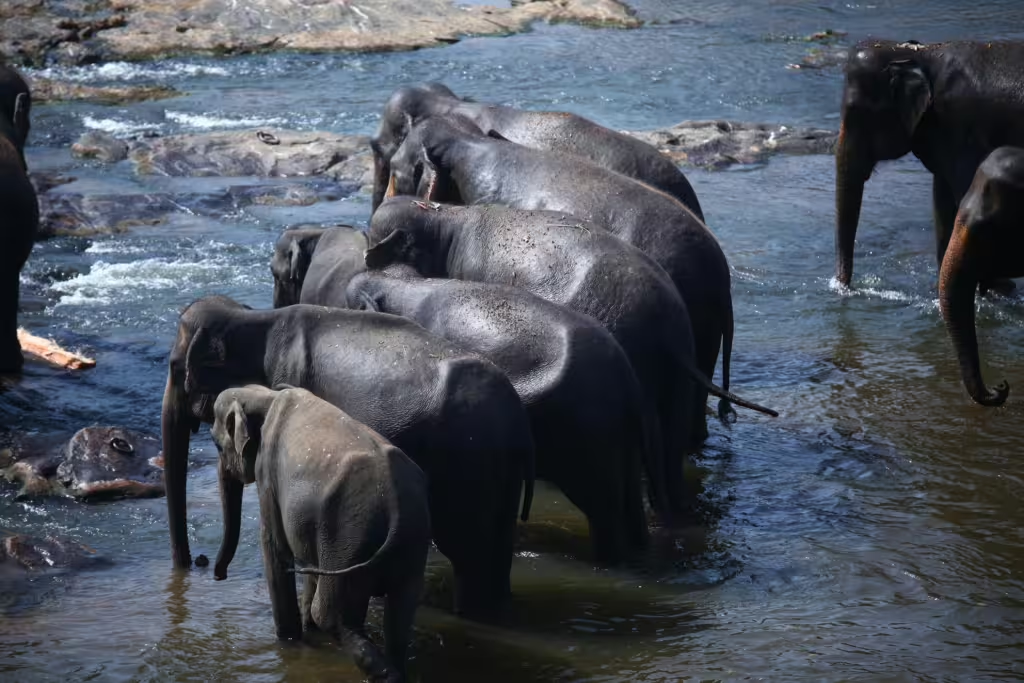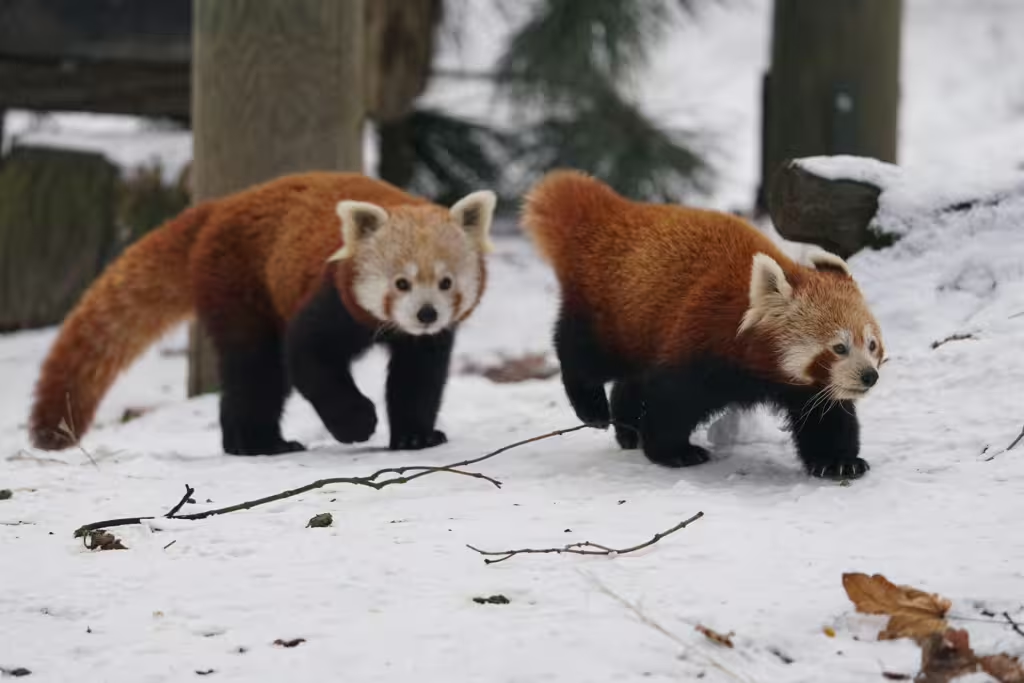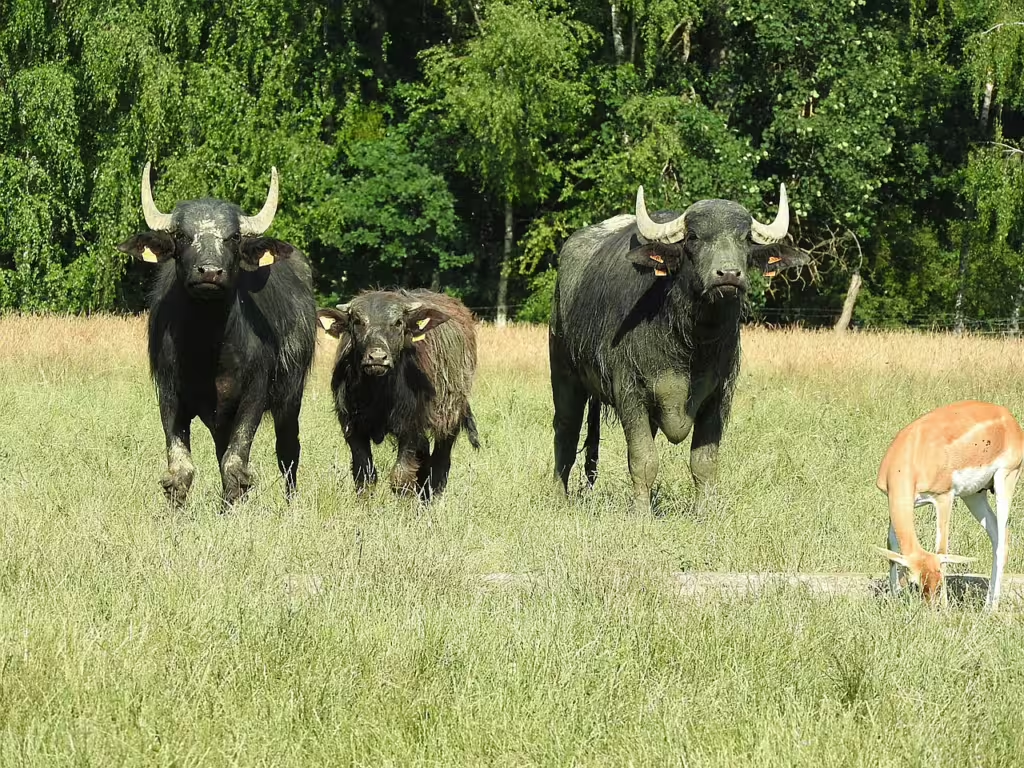According to most experts, Asia is the largest and most biodiverse continent on the entire planet. Across this impressive landmass lies a staggering range of different habitats. If you were to travel the continent, you would encounter frigid mountain ranges, dense tropical rainforests, scorching deserts, grassy plains, and flooded marshes along the way. And within this array of environments, lives a multitude of terrestrial lifeforms; and their young.
Today, we continue our investigation into the many animal parents of the planet. Each animal that dwells on the Asian continent has evolved their own set of unique adaptations to survive in their particular biome, and many of those adaptations are a means of ensuring the survival of their progeny. Indeed, survival in the wild doesn’t just mean self-preservation—it also involves raising and protecting the next generation. As ever, animal parenting can take many different forms, each one shaped by climate, geography, predation, and the specific needs of each species.
In this article, we will examine the parental behaviors of many Asian land animals. We will journey across the continent, from the vast plains of the Indian subcontinent, to the frozen peaks of the Himalayas. We will uncover home everything from elephants to snow leopards care for their young. Along the way, perhaps we will gain a better understanding as to how animals raise their young in a harsh, sometimes unpredictable world. And perhaps, it will ultimately help us to appreciate the resilience, adaptability, and instinctual intelligence found throughout the natural world.

Asian Elephant: Extended Family Parenting
We begin our list with the largest example: the Asian elephant. Known by the scientific name Elephas maximus, these breathtaking giants are well known for both their intellect and the strong family ties that differentiate them from many, less intelligent species. One of two remaining species of elephant still left on this planet, the Asian variety roams the forests and grasslands of India, Sri Lanka, Thailand, and other mainland habitats, forming tight-knit matriarchal herds as they make their way through the world.
Parenting Strategy:
Those same, aforementioned matriarchs are an important part of what makes mother elephants such remarkable parents. After carrying their baby for an astounding 22 months, the mother elephant finally giver birth. Her calf, for she only has one at a time, is born nearly blind; making it completely dependent on her for food, safety, and sight. The thing is, elephant parenting, like elephant living, is a group effort. Female relatives, known as “allomothers,” help care for the young calves within the herd. They guide, protect, and will even babysit calves while the mothers are resting or out gathering food for themselves.
This sort of cooperative care is reminiscent of the types of parenting used by wolves and other communal creatures. It also ensures that the calves grow up in a stable, nurturing environment. This is important because it teaches the baby elephants vital social and survival skills from the entire herd. As elephant calves age quite slowly, the bond between mother and calf is especially strong, often lasting well into adulthood.
Red Panda: Solitary But Devoted
Red pandas (Ailurus fulgens) are quite the opposite of elephants. Where the latter lives in large family groups, red pandas tend to be quite solitary creatures. Still, the two are often neighbors, as the pandas often frequent the same temperate forests that elephants sometimes wander through during the course of their foraging and migrations. Most of the time though, red pandas can be found in the eastern Himalayas and southwestern China.
Parenting Strategy:
Unlike elephants, who rely on the help of the whole herd to watch their kids, red panda mothers are left to their own devices when it comes to their babies. In fact, mother red pandas are solely responsible for the rearing of their young. After carrying their one to four cubs for between three and five months, the mother gives birth. She then begins the arduous, lonely task of caring for the cubs in a well-hidden nest made of twigs, leaves, and grass; but this is how she likes it.
Red pandas might be solitary by nature but when it comes to their kids, they are definitely cuddlers. Mother red pandas will stay with her cubs almost constantly for the first week, only leaving briefly to feed themselves. Mother pandas are wary of strangers and discovery, however, and will relocate the cubs to different nests every few days to keep would-be predators off their scent. As for the cubs, they remain hidden with their mother for around 90 days before emerging, but they don’t go far. The cubs will then stay with their mother until they’re about 8 months old.
Snow Leopard: Stealth and Seclusion in the Mountains
Snow leopards are one of the rarest cats in the entire world and since they happen to live in remote, snowy mountains of Central and South Asia, they are also one of the most elusive. Their range includes parts of Mongolia, Nepal, and northern India.
Parenting Strategy:
Like most big cats, snow leopards are solitary animals. They give birth in spring or early summer, when conditions are less harsh and the cubs can grow into their winter coats over time. When the time is right, the mother leopard seeks out a hidden den, usually in a rocky crevice or cave, where she gives birth to two or three cubs at a time.
Leopard cubs are born blind and helpless, just like elephants, and rely on their mother for everything during the first few weeks of life. In the first week proceeding their birth, the mother leopard remains with the cubs, living off her own stored body fat. Once they are old enough, she ventures out of the den with them so that she can instruct them about how to stalk prey, climb rocky terrain, and navigate the treacherous environment they call home. Snow leopard cubs remain with their mother for about 18–22 months before venturing out on to find a life of their own.

Indian Cobra: A Reptilian Rarity in Maternal Care
Snakes may not seem like obvious choices to discuss when it comes to attentive parenting, but you’d be surprised which animals show care for their young. Now, it is true that most snake species abandon their eggs after laying them, but the Indian cobra is the exception to the rule. This animal evinces a rare behavior among reptiles: egg guarding.
Parenting Strategy:
Mother Indian cobras can be found nesting in moist nets, underground burrows, or eve termite mounts all throughout the Indian subcontinent. After laying upwards of 30 eggs in her nest, the venomous, cantankerous mother cobra will then remain nearby, often coiled around the eggs, while she waits for them to reach a certain age. Her mere presence is often enough to deter predators such as mongooses or monitor lizards for the two months she remains among them. Once they hatch, however, the coblings are on their own.
Malayan Tapir: Camouflage and Care in the Rainforest
Deep in the tropical forests of Malaysia, Thailand, and Sumatra lives the Malayan tapir, the only tapir species that is native to Asia. This curious creature is one of the strangest looking animals on the planet and one of the cleverest mothers on the whole continent.
Parenting Strategy:
Tapirs, like many large, terrestrial mammals, only give birth to a single calf at a time. Mother tapirs carry their young a bit longer than humans do, around 13 months. Unlike their strikingly black and white parents, baby tapirs are born with white spots and stripes; a natural camouflage that helps them blend into the undergrowth of their rainforest homes. But camouflage isn’t all the baby has going for it; it also has a powerful, angry momma to help protect it. Mother tapirs will often supplement the natural camo coat by keeping the baby hidden amongst the weeds for weeks. She will then stay with the baby for up to 8 months, nursing it and using low-frequency vocalizations to keep in contact while they forage nearby.

True Investigator Says…
As you can see, it doesn’t matter whether an animal hails from the high mountains, the deep jungles, or the open plains; in the wild, proper parenting is the best way that a species can ensure their survival. Though we have only touched on a handful of endemic species, it is clear that Asia’s land animals showcase a host of remarkable strategies for raising their babies. Some use cooperative care methods, others, protective camouflage, and some just maintain a close distance and keep their senses peeled. What we see, most of all, is this universal drive to protect one’s young; it is a drive shared by species large and small, by predator and prey alike. Moreover, it is something that we, as humans and parents, can truly understand.
Discover more from TrueInvestigator
Subscribe to get the latest posts sent to your email.


